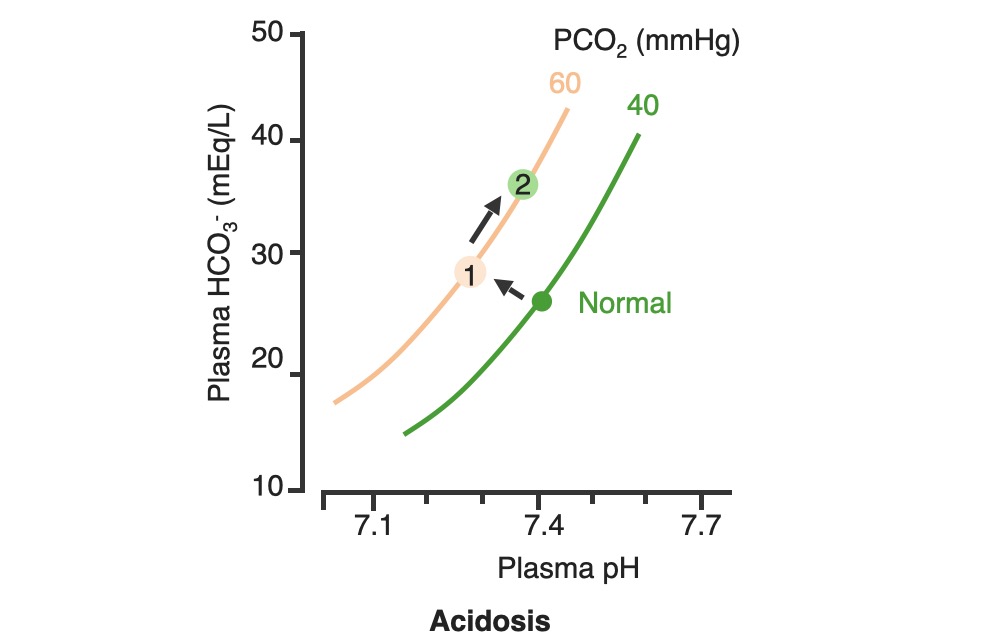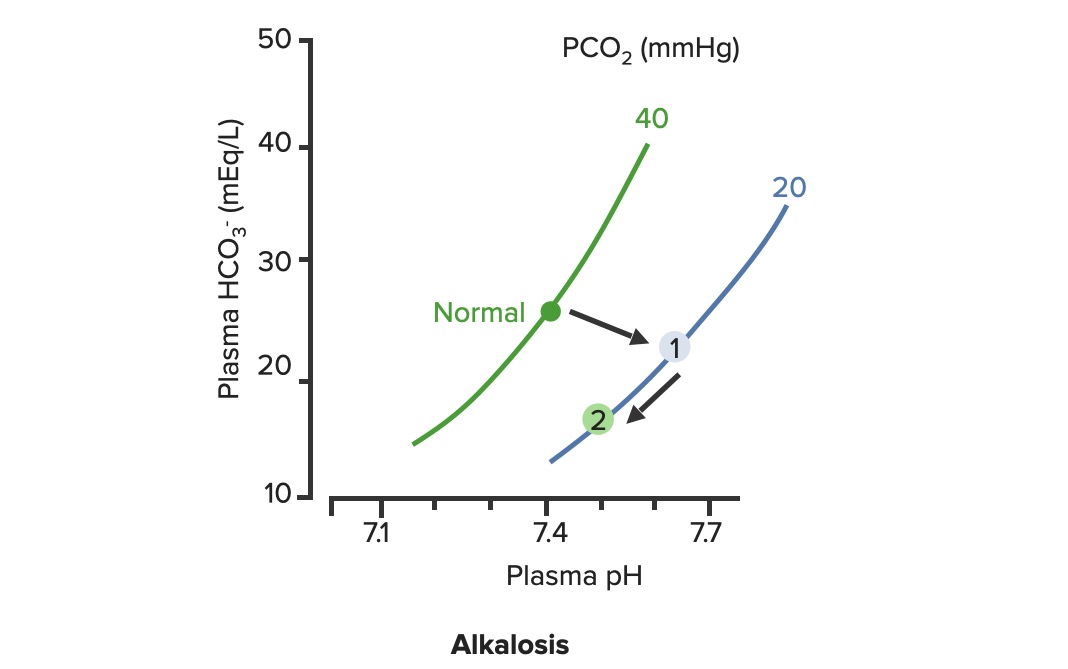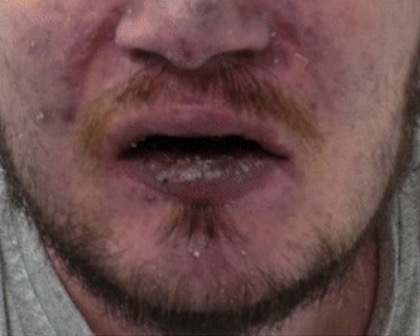Playlist
Show Playlist
Hide Playlist
Practice Calculation – Hypoxemia and Hypercapnia
-
Slides 04 HypoxemiaHypercapnia RespiratorySystem.pdf
-
Download Lecture Overview
00:01 Alright. So knowing that this is our alveolar gas equation, let's go through one example together before we move on. 00:09 So let's say there's a 30 year old patient female patient who's recovering from an operation in which she had an arterial line placed in her radial artery. 00:18 Why this is important is because if we have radial artery access we can yield or get an arterial blood gas and that's we did. 00:27 An ABG yielded the following data. A PaO2 of 92. 00:33 PaCO2 of 40, a bicarb of 24 and a pH of 7.4. 00:40 We need to know what the current ambient conditions are. 00:44 And in this case we have a barometric pressure of 747. 00:50 Okay. Now that we have the scenario down, let's go through how you would go talk through the calculation. 00:56 The first thing to do is we need to calculate the PIO2. 01:00 That's the partial pressure of inspired O2. 01:04 For this we take the barometric pressure minus the water vapor pressure. 01:08 In the case, we have a barometric pressure of 747 and the water vapor pressure of fully saturated air is 47 mmHg. 01:17 Subtract those two together, you should yield 700. 01:21 Now we need to take that number and multiply it by the fraction of gas O2 in the air and that's 21%. 01:30 So if we go through 700 times 21% that should yield 147. 01:36 So that's the first part of the equation for alveolar partial pressure of O2. 01:42 The second part involves the carbon dioxide concentration. 01:47 So here we need to look at the arterial blood gas and find the PaCO2 which is 40. 01:54 We take 40 times 1.2 and that should yield 48. So now we simply subtract 147 minus 48 and that should yield 99. 02:05 Then we have to add back in that correction factor which is two and that would yield 101. 02:12 So, the PAO2 is 101. In our particular case, we want to know what the A-a gradient is. 02:23 So the first capital A is 101. 02:26 Now what we're going to do is subtract from the case with the small AO2 is. 02:33 So we now look for PaO2 and that's 92. So you subtract 101. 02:40 From 92 that should yield 9. So our A-a O2 gradient is nine which is normal. 02:49 We want to have a number that's below 15. 02:53 When you go through a lot of different pathologies such as a right to left shunt and their ventilation to perfusion inequality that A-a gradient will be quite a bit larger. 03:05 Sometimes it gets in numbers of 60, 70, even 100 A-a gradient. 03:12 But, we'll get to that in a few slides. 03:14 Now we know how to calculate an alveolar to arterial O2 gradient.
About the Lecture
The lecture Practice Calculation – Hypoxemia and Hypercapnia by Thad Wilson, PhD is from the course Respiratory Physiology.
Included Quiz Questions
What are the units for PaO2?
- mm Hg
- s
- m
- kg
- mol
Customer reviews
5,0 of 5 stars
| 5 Stars |
|
5 |
| 4 Stars |
|
0 |
| 3 Stars |
|
0 |
| 2 Stars |
|
0 |
| 1 Star |
|
0 |






